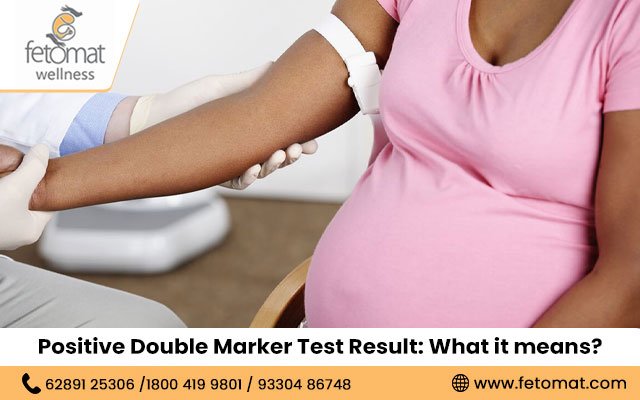A positive double marker test is a significant aspect of prenatal screening that can indicate potential risks for chromosomal abnormalities and genetic disorders in a developing fetus. This test, combined with other screenings and assessments, helps couples make decisions about their pregnancy. Below, a doctor from the best clinic for pregnancy care in Kolkata provides a detailed overview of what a positive double marker test signifies and its implications.
Understanding the Double Marker Test
The double marker test is performed between 11 and 14 weeks of pregnancy. It measures two specific hormones in the mother’s blood: free beta-human chorionic gonadotropin (free beta-hCG) and pregnancy-associated plasma protein A (PAPP-A). These markers, when analyzed alongside an ultrasound and the mother’s pregnancy history, help assess the risk of chromosomal abnormalities such as Down syndrome, Edward syndrome and Patau syndrome.
Probability and Risk Assessment
The results of the double marker test are expressed as statistical probabilities. For instance, a result showing a 1 in 250-1 in 1000 (intermediate range) risk requires further investigation. Generally, a positive double marker test suggests that the fetus has an elevated risk of chromosomal abnormalities, but it does not confirm the presence of a condition.
Chromosomal Abnormalities and Genetic Issues
A positive result can indicate a chance of the baby having structural or chromosomal abnormalities. Down syndrome is one of the most common conditions screened for. Other conditions like Edward syndrome and Patau syndrome are also evaluated through statistical probability analysis. While genetic problems themselves cannot be seen directly, their risk can be inferred through blood tests and ultrasound parameters.
The Role of Ultrasound
An ultrasound, particularly the nuchal translucency scan performed at 12 weeks, assesses the fluid at the back of the baby’s neck. This measurement, combined with the double marker test, provides a more comprehensive risk assessment. However, it’s worth noting that an ultrasound may appear normal even if the double marker test indicates a high risk, says the doctors of the best high risk pregnancy care clinic in Kolkata.
Further Investigations
Further diagnostic procedures may be recommended for those with a positive double marker test. These include:
- Amniocentesis: This involves sampling the amniotic fluid to analyze fetal cells for DNA abnormalities. It is performed around 15-20 weeks of pregnancy.
- Chorionic Villus Sampling (CVS): Done around 12-13 weeks, this test involves taking a sample from the placenta to detect genetic conditions.
These invasive tests can provide a definitive diagnosis with nearly 100% accuracy.
Considering Advanced Maternal Age
Women aged 35 and older are at a higher risk of having babies with chromosomal abnormalities. For these women, the double marker test is especially crucial as it offers early insights into potential issues, allowing for timely decisions regarding further testing or interventions.
Non-Invasive Prenatal Testing (NIPT)
For a more accurate screening, Non-Invasive Prenatal Testing (NIPT) can be performed. This test analyzes fetal DNA circulating in the mother’s blood and offers highly accurate screening for Down syndrome and other chromosomal conditions.
Ultimately, the results of these tests, combined with professional medical advice from the doctors of the best clinic for pregnancy care in Kolkata can help expectant parents make decisions about their pregnancy. Whether it’s considering further testing, preparing for potential challenges or counselling on the best course of action, understanding the implications of a positive double marker test is crucial for pregnancy management.
Interpreting High-Risk Results
A high-risk positive result can be distressing, but it doesn’t necessarily mean the baby has a genetic disorder. It indicates the need for additional testing and consultations with a genetic counsellor to understand the implications fully.

